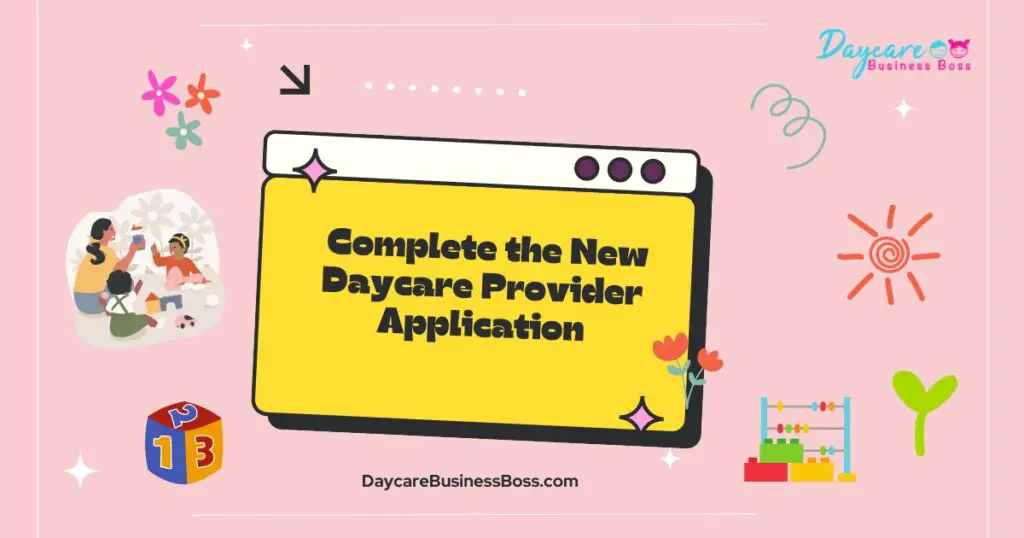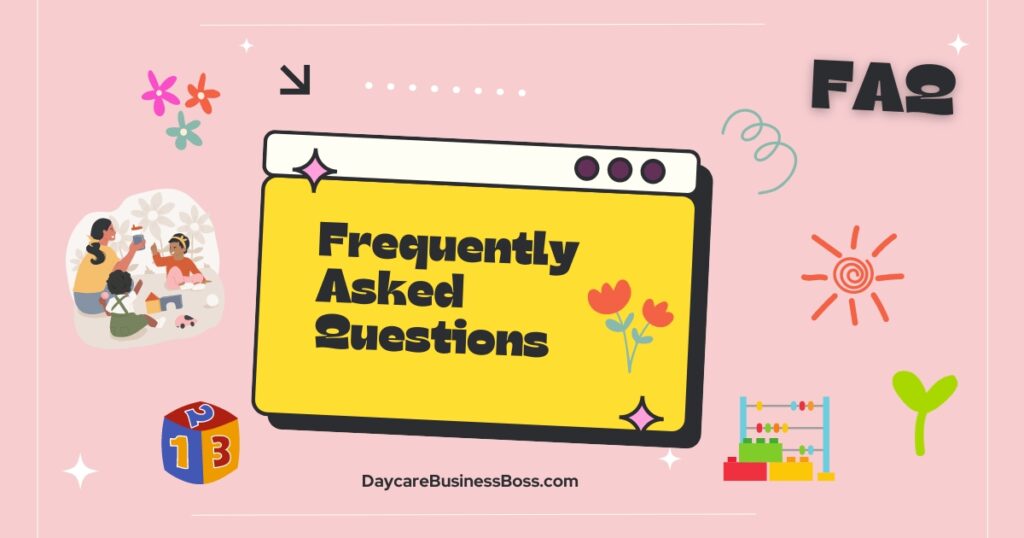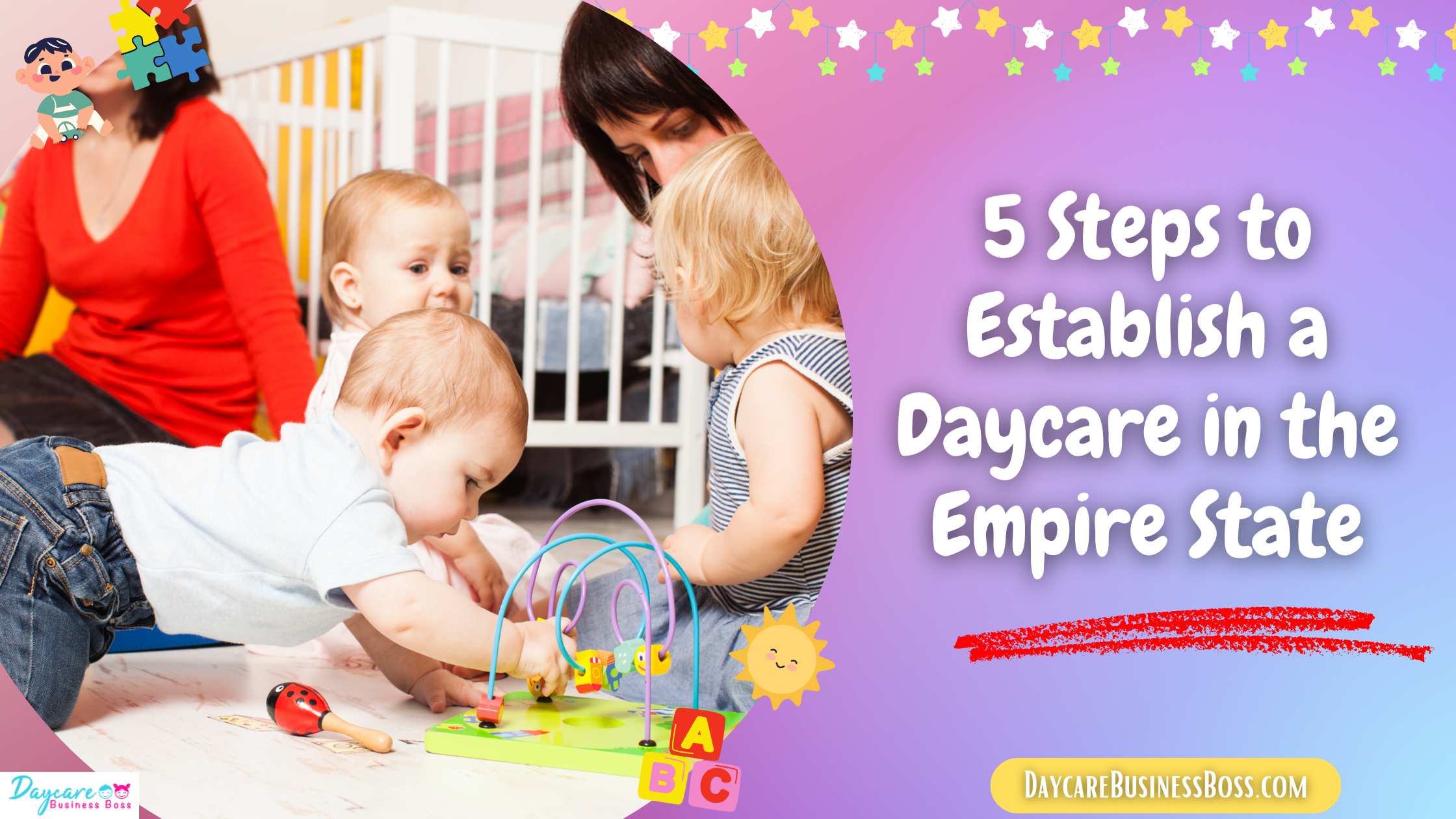As of March 2017, there are over 17,200 daycares in New York with about 800,000 children under the age of 6 residing in the state with working parents. Because of this densely populated American state, there is always a need for another daycare facility to accommodate the many children in need of child care on a daily basis.
The 5 steps to establish a daycare in the New York are:
- Finish the mandatory orientation online.
- Build a relationship with OCFS.
- Complete the application process for licensing.
- Receive the required inspections and create an emergency plan.
- Time for the grand opening day!
For more information on New York’s child care demographics and statistics, visit the Office of Children and Family Services (OFCS) of New York.
Finish the Mandatory Orientation Online
The first step to opening a daycare in the Empire State is to complete their mandated online orientation. There are only sample applications available on their website for reference only. To gain access to the full application, you must do the online orientation in its entirety first.
Access the online orientation using this link. The online orientation takes about an hour and a half to complete.
Once you have finished the online orientation, you can request the application for your daycare type to be sent to you virtually. If you prefer, you can request the application in-person at your closest OCFS office to begin the application process.
There are 8 regional offices and 4 borough offices throughout New York to visit the Office of Children and Family Services. To find your closest regional or borough office, visit this link for more information.
Build a Relationship with OCFS
Building a relationship with the Office of Family and Children Services (OCFS) of New York will:
- Expedite your application.
- Create a positive name for your daycare before it opens.
- Save money in the long run, so less mistakes are made during the licensing process.
- Save time in completing your application correctly the first time.
- Receive the proper guidance you need on completing the application and all the details behind the process once it has been submitted.
Contact OCFS by calling (518)-474-9454. If you live nearby and prefer to visit in-person for application guidance or updates on your processing application, you can visit the following address to speak to a licensing representative.
South Building, Room 309
52 Washington Street
Renasselaer, NY 12144-2796
3.
Complete the New Daycare Provider Application

Based on the daycare you wish to open, you will be given a specific application to complete. There are 5 types of daycares in which you can choose to operate in New York.
- Small Daycare Center
- Family Daycare
- Group Family Daycare
- School-Age Daycare
- Center-Based Daycare
Whatever type of daycare you decide to run, you will be asked to complete the following on this new daycare provider application.
- Your information as the Daycare Owner
- Name
- Date of birth
- SSN
- Your child care experience hours
- Relevant child care training
- Any additional qualifications that make you a qualified daycare provider
- 3 professional references to vouch for your qualifications
- Your legal business information
- Business classification
- Legal business information specific to New York
- Any partners in your business
- Employee health and background screenings
- Fingerprinting for all staff
- Background checks for yourself and your staff members
- CPR/First-Aid training for all staff
- Mantoux/Tuberculosis screening form and physical form for your employees to take to their doctors
- Emergency plan writing and diagrams
- How to create an emergency plan diagram
- How to write an effective emergency plan
- Inspection information and forms
- Water heater supply
- Fuel burning source inspection
- Other required inspections
View the application samples here for your reference.
Receive the Required Inspections & Create an Emergency Plan
To become a fully licensed and regulated daycare facility, you will have to receive the required inspections and be sure your emergency plan is up to par before opening day.
Your daycare will have to undergo inspections to become licensed such as:
- Water heater supply inspections to be sure they are operating within standards.
- Fuel burning source inspections, so it is safe around children and staff.
- Spatial inspection whether you are in a family or center-based daycare to be sure you know the maximum number of children that can be enrolled at your facility.
- Your emergency plan is written effectively and can be implemented in a variety of emergencies.
- Emergency plan diagrams are thoroughly laid out for proper evacuation in any emergency like in-house fire or intruder invasion.
Write Your Emergency Plan
You must write your daycare emergency plan to portray the following to your licensor and the parents of the enrolled children at your facility.
- How you will respond to emergency situations
- Fires
- How evacuations will happen if a large in-house or nearby fire is happening.
- Where fire extinguishers are stationed to help with small fires.
- Tornadoes
- Safe areas to go in the daycare (like the basement) in case the tornado hits the building.
- Hurricanes
- Where children and staff will go away from windows during a hurricane.
- Intruder situations.
- How staff and children will hide and keep silent if there is an intruder situation.
- Bomb threats
- Evacuation procedure for when a bomb threat directed at the daycare is received from any source.
- What you will do to keep children and staff safe during the emergency.
- Shelter-in-place areas of the classroom away from windows.
- Color card system (green for safe, red for not safe, etc) to show the status of the classroom during the emergency.
- How children will stay safe during the emergency.
- How teachers will comfort them with their favorite soft toys.
- How they will administer any medications to children that need them.
- Emergency non-perishable snacks for children and staff to not go hungry during a long-term emergency.
- How infants and young disabled children will be transported during evacuations.
- How your daycare will send children home after the emergency has ended and becomes safe for departure.
- Something like: Children will not be able to leave the facility until all children in attendance for that day have been accounted for in each classroom.
- Fires
Create Your Emergency Plan Diagram for Evacuations
- Show a separate diagram that displays the primary emergency evacuation route from each classroom and from your office to the outside safe haven.
- Highlight at least 1-2 other alternative routes for each classroom that is highlighted in a different color on each classroom evacuation diagram.
- Post this diagram in each prospective classroom so main employees and substitute officials can have access to this at all times.
Create Your Emergency Plan Diagram for Shelter-in-Place Emergencies
- Highlight each place in the classroom the safe shelter-in-place area.
- Create an overall daycare center diagram, then make one for each classroom for a zoom-in on the shelter-in-place safe haven inside of the classroom.
- On each classroom diagram, highlight where the shelter-in-place preparedness kit is located. If a substitute teacher or aide is on for the day, he or she can easily figure out where the kit is located to be expeditiously prepared for the emergency.
- Make sure to post these emergency plan diagrams in each classroom and include them in your emergency plan inside of the daycare handbook that you send home with parents.
Time for the Grand Opening Day!
Now that you’ve undergone all the licensing requirements, have received the mandated inspections, and got your daycare license, it’s time for grand opening day!
Here’s a grand opening day checklist.
- Hold an enrollment event to get your enrollment capacity as high as possible.
- Have your staff complete all the mandated OCFS child care training.
- Go over with teacher and staff the following
- What to put on their bulletin boards for the first month
- Lesson plans for the first few weeks
- Hold a meeting the day before the grand opening day to be sure you are all ready for the big event.
- Be sure all classrooms are properly furnished.
- Lounging furniture for the children
- Bookcases for age appropriate books at the reading nook.
- Toy cubbies
Conquer the Empire State with Your Daycare
Every daycare in the Empire State has something different to bring to the table. What will be your niche and how will you uniquely serve New York’s youth in your childcare facility?
Related Questions

- Why do I have to complete the online orientation before I can access the full application?
You must complete the online orientation before having access to the full daycare licensing application because:
- OCFS wants you to know how to properly complete the application.
- Licensing and regulation guidelines must be stressed so that you are fully aware of the application requirements.
- Receive tips on completing the application, so you are not making any costly mistakes that could push back the amount of time it takes to get your application approved.
- How can I think of a niche for my daycare?
Think of a niche for your daycare by:
- Thinking of your interests and the interests of your staff.
- Maybe each teacher can offer a supporting niche in their classroom to corroborate the overall niche that your daycare offers.
- How your interests line up with the early childhood education curriculum.
Please note: This blog post is for educational purposes only and does not constitute legal advice. Please consult a legal expert to address your specific needs.
To find out more about what is needed, checkout our startup course and documents here.

Meet Shawn Chun: Entrepreneur and Childcare Business Fan.
I’m a happy individual who happens to be an entrepreneur. I have owned several types of businesses in my life from a coffee shop to an import and export business to an online review business plus a few more and now I create online daycare business resources for those interested in starting new ventures. It’s demanding work but I love it. I do it for those passionate about their business and their goals. That’s why when I meet a childcare business owner, I see myself. I know how hard the struggle is to retain clients, find good employees and keep the business growing all while trying to stay competitive.
That’s why I created Daycare Business Boss: I want to help childcare business owners like you build a thriving business that brings you endless joy and supports your ideal lifestyle.

